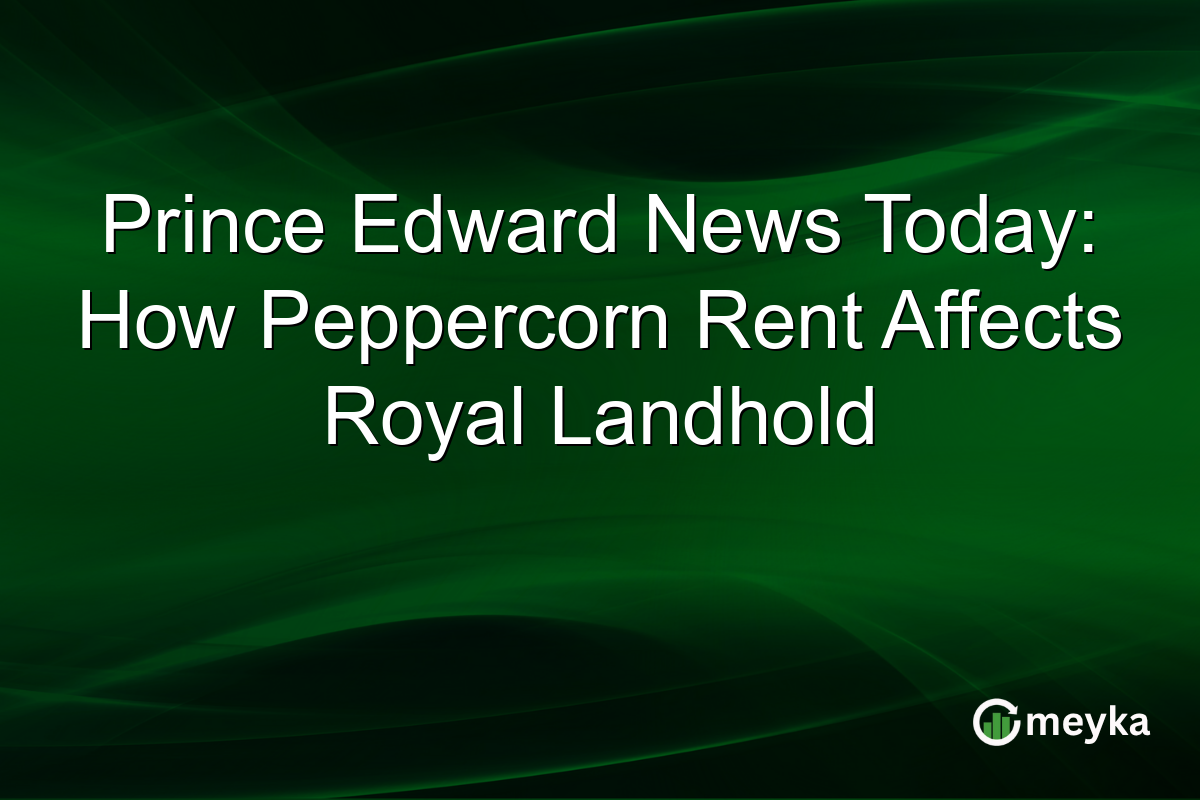Prince Edward News Today: How Peppercorn Rent Affects Royal Landhold
Prince Edward’s involvement in property lease agreements has brought significant attention to the century-old concept of ‘peppercorn rent.’ Originally a nominal fee, often just a single peppercorn, this arrangement is employed to formalize leases without financial burdens for tenants. As royal lands come under scrutiny, the impact of such leases on the UK real estate market and perceptions of royal property management is vast. Understanding the implications sheds light on innovative estate management and historical traditions.
Understanding Peppercorn Rent
Peppercorn rent is a symbolic payment, traditionally one peppercorn per year. It maintains formalities within lease agreements while minimizing financial obligations. This age-old practice is relevant today, especially in the context of royal properties, where leases need to be recorded legally without imposing typical rental costs.
This arrangement is prevalent in keeping historical properties within families or ensuring charitable organizations can operate affordably. Prince Edward’s usage of this method underlines its importance in royal landholdings, where actual payment is less critical than maintaining legal tenure grounds.
Impact on Royal Properties
The incorporation of peppercorn rent in Prince Edward’s estates highlights an efficient way to uphold historical estate management without commercializing royal properties.
By using such nominal fees, the royal family ensures that estates can be maintained within trusted parties while avoiding market-driven rental prices. The royal property lease agreements utilizing peppercorn rents suggest a blend of tradition and practicality, impactful in conserving the integrity and management of royal properties in modern times.
For more insights on this royal management approach, visit NewsNow’s Royal Family Section.
Effects on the UK Real Estate Market
The use of peppercorn rent agreements influences perceptions of property leasing within the UK real estate market. While not common in commercial real estate, such leases represent a method to maintain heritage properties’ social roles without succumbing to financial pressures.
The symbolic nature of peppercorn rent challenges typical market norms, encouraging innovative property management solutions. It accentuates the roles these properties play beyond mere assets in the market, influencing broader real estate strategies by emphasizing cultural and historical value over monetary aspects.
Final Thoughts
In conclusion, the concept of peppercorn rent, while traditional, holds modern relevance in managing royal estates such as those overseen by Prince Edward. This practice transcends typical market economics, focusing instead on preserving history and reducing financial burdens on tenants. For the UK real estate market, the implications are significant. Such agreements advocate for creativity in property management, potentially setting trends for balancing tradition with contemporary needs. As real estate evolves, these symbolic leases offer insights into preserving cultural heritage without destabilizing the market.
FAQs
A peppercorn rent is a nominal fee, often a single peppercorn, used in leases to keep legal agreements in place without imposing actual rental costs. It’s common in traditional and certain charitable property agreements.
In royal estates, peppercorn rents ensure properties remain within trusted parties and are formalized legally. It avoids high rental costs and preserves the historical and familial value of the properties.
Peppercorn rent influences the market by showing an alternative approach to property management focused on maintaining heritage rather than commercial gain. It encourages viewing properties as cultural assets rather than mere market commodities.
Disclaimer:
The content shared by Meyka AI PTY LTD is solely for research and informational purposes. Meyka is not a financial advisory service, and the information provided should not be considered investment or trading advice.






